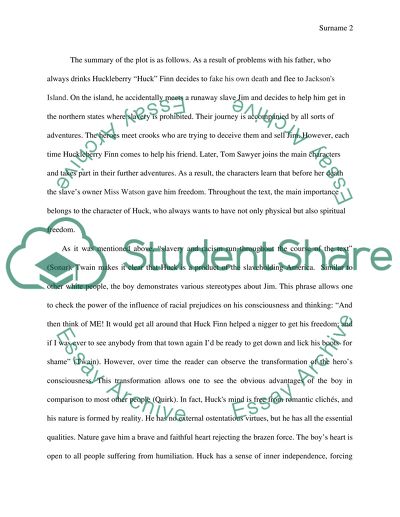Cite this document
(“Huck Finn as the Personification of the Struggle against the Physical Essay”, n.d.)
Retrieved from https://studentshare.org/literature/1691229-literary-analysis-essay-on-the-book-the-adventures-of-huckleberry-finn
Retrieved from https://studentshare.org/literature/1691229-literary-analysis-essay-on-the-book-the-adventures-of-huckleberry-finn
(Huck Finn As the Personification of the Struggle Against the Physical Essay)
https://studentshare.org/literature/1691229-literary-analysis-essay-on-the-book-the-adventures-of-huckleberry-finn.
https://studentshare.org/literature/1691229-literary-analysis-essay-on-the-book-the-adventures-of-huckleberry-finn.
“Huck Finn As the Personification of the Struggle Against the Physical Essay”, n.d. https://studentshare.org/literature/1691229-literary-analysis-essay-on-the-book-the-adventures-of-huckleberry-finn.


